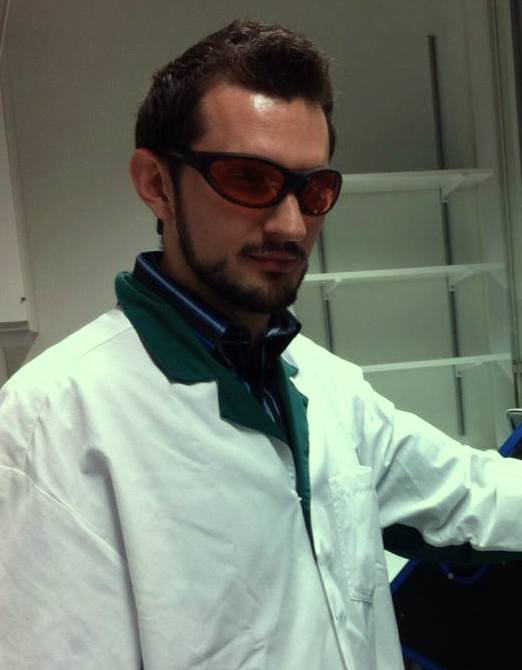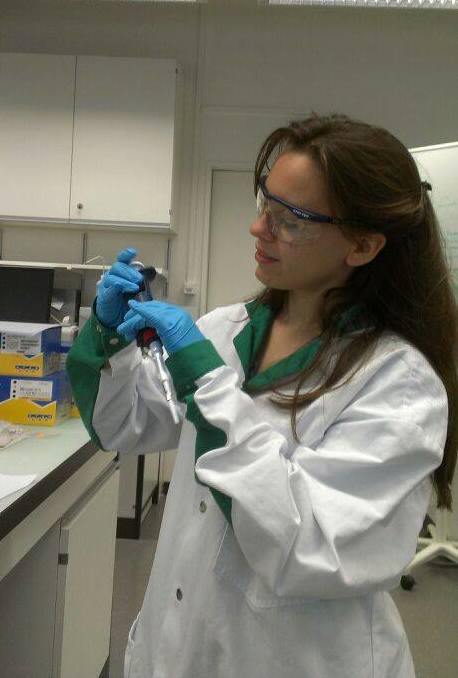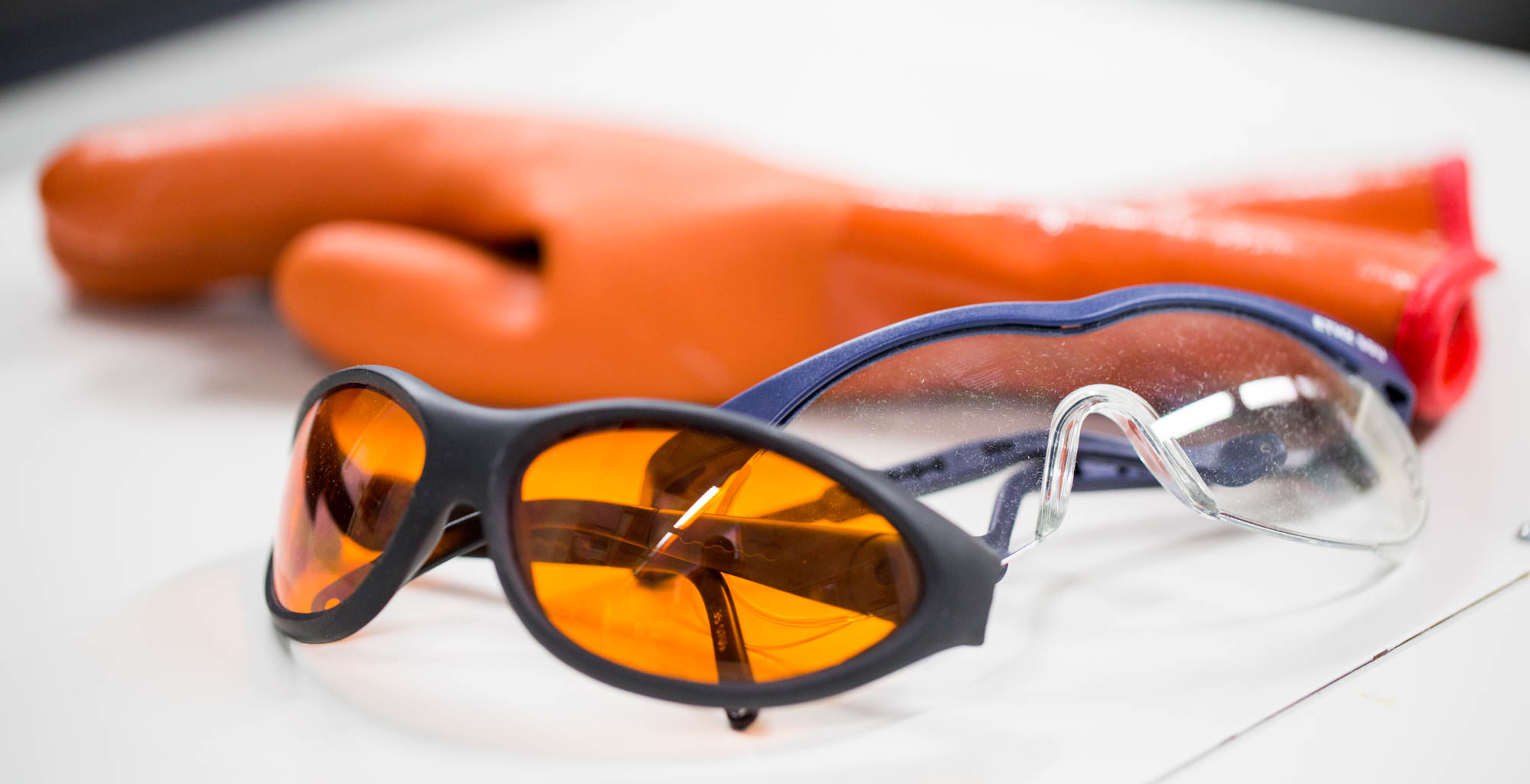Team:ETH Zurich/lab/safety
From 2014.igem.org
(→Safety Training) |
|||
| (6 intermediate revisions not shown) | |||
| Line 1: | Line 1: | ||
{{:Team:ETH_Zurich/tpl/head|Safety}} | {{:Team:ETH_Zurich/tpl/head|Safety}} | ||
| - | <html><article></html> | + | <center> |
| + | {{:Team:ETH Zurich/tpl/scrollbutton3|Training|blue}} | ||
| + | {{:Team:ETH Zurich/tpl/scrollbutton|Risks|red}} | ||
| + | {{:Team:ETH Zurich/tpl/scrollbuttontworows|Safety|Form|green}} | ||
| + | </center> | ||
| + | |||
| + | <html><article id="Training"></html> | ||
== Safety Training == | == Safety Training == | ||
As part of our institution's guidelines, it is mandatory for every student to take the Safety Course organized by the department's Safety Committee. The course is held by Mr. Niels Buerckert, the biosafety officer at D-BSSE. In addition, all team members received the standard lab training from our supervisors. | As part of our institution's guidelines, it is mandatory for every student to take the Safety Course organized by the department's Safety Committee. The course is held by Mr. Niels Buerckert, the biosafety officer at D-BSSE. In addition, all team members received the standard lab training from our supervisors. | ||
<br> | <br> | ||
<br> | <br> | ||
| - | The topics taught ranged from personal protection such as appropriate clothing when working in the lab, which includes wearing a lab coat, gloves, goggles, no contact lenses, long trousers and appropriate shoes, to general lab rules like no food and drinks (also no storage in lab fridges) and no smoking. Further topics included maintenance of a clean workspace, correct labeling and storage of chemicals and biological substances, and instructions on transportation of chemicals and solvents in the building (not in the passenger elevator but in the freight elevator and the usage of correct chemical container in a bucket). | + | The topics taught ranged from personal protection such as appropriate clothing (see Figure 2) when working in the lab, which includes wearing a lab coat, gloves (see Figure 3), goggles (see Figure 1), no contact lenses, long trousers and appropriate shoes, to general lab rules like no food and drinks (also no storage in lab fridges) and no smoking. Further topics included maintenance of a clean workspace, correct labeling and storage of chemicals and biological substances, and instructions on transportation of chemicals and solvents in the building (not in the passenger elevator but in the freight elevator and the usage of correct chemical container in a bucket). |
| - | [[File:ETH2014_Safetyglasses.jpg|300px|left|thumb| Safety eyewear]][[File:ETH2014_Safetyclothes.jpg|262px|left|thumb| Appropriate clothing]] | + | [[File:ETH2014_Safetyglasses.jpg|300px|left|thumb| '''Figure 1''' Safety eyewear]][[File:ETH2014_Safetyclothes.jpg|262px|left|thumb| '''Figure 2''' Appropriate clothing]] |
<br> | <br> | ||
<br> | <br> | ||
| Line 21: | Line 27: | ||
You can find out more about ETH safety guidelines in this [[Media:ETH_Zurich_safety_manual_en.pdf|file]]. | You can find out more about ETH safety guidelines in this [[Media:ETH_Zurich_safety_manual_en.pdf|file]]. | ||
| - | [[File:ETH_Zurich_2014_Glassesandgloves.jpg|600px]] | + | [[File:ETH_Zurich_2014_Glassesandgloves.jpg|600px|center|thumb|'''Figure 3''' Safety equipment]] |
<html></article></html> | <html></article></html> | ||
| - | <html><article></html> | + | <html><article id="Risks"></html> |
== Risks of our project == | == Risks of our project == | ||
| Line 39: | Line 45: | ||
=== Risks to the safety and health of the general public and the environment === | === Risks to the safety and health of the general public and the environment === | ||
| - | All experiments involving live bacteria were conducted in an environment designed to contain bacteria. Therefore, there is no direct contact with the environment outside the laboratory and therefore, together with the fact that the involved bacteria are of biosafety level 1, our project provides no remarkable risk to the general public. Since all team members are following Good Laboratory Practices (GLP), we are working on a good basis to prevent the unintended release and spread of bacterial cultures. | + | All experiments involving live bacteria were conducted in an environment designed to contain bacteria. Therefore, there is no direct contact with the environment outside the laboratory and therefore, together with the fact that the involved bacteria are of biosafety level 1, our project provides no remarkable risk to the general public. Since all team members are following Good Laboratory Practices (GLP), we are working on a good basis to prevent the unintended release and spread of bacterial cultures. Safety measures like autoclaving and protective equipment will mitigate the risks to the environment. |
| - | + | ||
| - | + | ||
| - | + | ||
| - | + | ||
| - | + | ||
| - | + | ||
| - | + | ||
| - | + | ||
| - | + | ||
| - | + | ||
| - | + | ||
| - | + | ||
| - | + | ||
| - | + | ||
| - | + | ||
| - | Safety measures like autoclaving and protective equipment will mitigate the risks to the environment. | + | |
<html></article></html> | <html></article></html> | ||
| Line 70: | Line 60: | ||
== Future Risks and risk-reducing features == | == Future Risks and risk-reducing features == | ||
| - | The way our project is planned we do not intend any industrial, therapeutic, diagnostic or medicinal purposes or applications and so the organisms will be restricted to laboratory environments only. Moreover we see our project as a beginning or foundation and advancement will take time. Therefore it is difficult to envision scenarios where severe dangers are encountered. A possible scenario in the distant future could be that someone modifies our methods and | + | The way our project is planned we do not intend any industrial, therapeutic, diagnostic or medicinal purposes or applications and so the organisms will be restricted to laboratory environments only. Moreover we see our project as a beginning or foundation and advancement will take time. Therefore it is difficult to envision scenarios where severe dangers are encountered in the foreseeable future. A possible scenario in the distant future could be that someone modifies our methods and biobricks and usea them with organisms/genes that pose greater risks than the system established here. As the team has only used standard molecular biological methods and protocols that can be conducted in any laboratory fulfilling at least safety level 1 we see no new risks to personal, environmental and public safety arising from our project becoming more popular. |
<br> | <br> | ||
<br> | <br> | ||
| - | + | The system is designed in a manner that it will be necessary to have a BSL-1 lab environment that confers to safety measures. In case our project would grow into a popular product and be used outside of a BSL-1 lab, we would include a kill-switch in our system to avoid their spreading of the microorganisms outside of the controlled laboratory environment. | |
<html></article></html> | <html></article></html> | ||
| - | <html><article></html> | + | <html><article id="Safety"></html> |
==Link to our safety form== | ==Link to our safety form== | ||
Latest revision as of 00:01, 18 October 2014
Safety
Safety Training
As part of our institution's guidelines, it is mandatory for every student to take the Safety Course organized by the department's Safety Committee. The course is held by Mr. Niels Buerckert, the biosafety officer at D-BSSE. In addition, all team members received the standard lab training from our supervisors.
The topics taught ranged from personal protection such as appropriate clothing (see Figure 2) when working in the lab, which includes wearing a lab coat, gloves (see Figure 3), goggles (see Figure 1), no contact lenses, long trousers and appropriate shoes, to general lab rules like no food and drinks (also no storage in lab fridges) and no smoking. Further topics included maintenance of a clean workspace, correct labeling and storage of chemicals and biological substances, and instructions on transportation of chemicals and solvents in the building (not in the passenger elevator but in the freight elevator and the usage of correct chemical container in a bucket).
We were also instructed to take extra measures when working with flammable substances (especially ethanol) and people with long hair were instructed to tie their hair back when working with a flame. We also received detailed instructions on handling substances with known dangers such as acids, bases, methanol, ethidium bromide, ethers, or ethanol, and the use of safety tools such as eye shower and fume hoods were introduced.
Furthermore we were instructed how to react in case of emergencies such as fire or accidents. We discussed different scenarios and correct behavior. Important phone numbers and contact persons were introduced. We learnt how to treat people with minor injuries such as cuts or burns. The importance of seeing a physician after an incident was emphasized.
Towards the end of the lecture, a detailed explanation for the correct liquid and solid waste disposal was given. To enrich the lecture photographic examples of bad lab safety were shown and in an active process the mistakes were elaborated and improvements suggested.
You can find out more about ETH safety guidelines in this file.
Risks of our project
Risks to the safety and health of team members, or other people working in the lab
According to the WHO bio-safety manuscript and the applicable national rules, the organisms used by our team belong to the category of Risk Level 1. Organisms of this level are considered as unlikely to cause human or animal disease.
Since all strains used and all those which are intended to be used in the future are harmless in terms of pathogenicity and toxicity, these organisms or biological parts do not raise major safety concerns. The work in the wet-lab is carried out in a S1 laboratory with conventional safety standards. Regular safety precautions such as wearing gloves, glasses and a lab coat to protect us are implemented. No bacteria are released into the environment and all material contaminated with bacteria was autoclaved at 120 degrees Celsius and 1 bar overpressure. All chemicals used for the project were collected and disposed separately.
Risks to the safety and health of the general public and the environment
All experiments involving live bacteria were conducted in an environment designed to contain bacteria. Therefore, there is no direct contact with the environment outside the laboratory and therefore, together with the fact that the involved bacteria are of biosafety level 1, our project provides no remarkable risk to the general public. Since all team members are following Good Laboratory Practices (GLP), we are working on a good basis to prevent the unintended release and spread of bacterial cultures. Safety measures like autoclaving and protective equipment will mitigate the risks to the environment.
Measures to reduce the risks mentioned above
To avoid misuse by unauthorized people our lab is always locked when the last person leaves. No stranger can enter the building and the lab, since only authorized persons can enter our campus. Biological waste is autoclaved regularly. As we are appropriately dressed in the laboratory with lab coat (not taken outside of the laboratory) no potential harmful organisms can escape to the environment in this way. For additional personal protection everyone washes his or her hands before leaving the lab.
The risk of our project for the environment, public and also the people working in the laboratory has already been minimized when choosing the organism. As the E. coli strains used by the team belong to Risk level 1 organism no harm for human, animals and environment is to be expected.
Future Risks and risk-reducing features
The way our project is planned we do not intend any industrial, therapeutic, diagnostic or medicinal purposes or applications and so the organisms will be restricted to laboratory environments only. Moreover we see our project as a beginning or foundation and advancement will take time. Therefore it is difficult to envision scenarios where severe dangers are encountered in the foreseeable future. A possible scenario in the distant future could be that someone modifies our methods and biobricks and usea them with organisms/genes that pose greater risks than the system established here. As the team has only used standard molecular biological methods and protocols that can be conducted in any laboratory fulfilling at least safety level 1 we see no new risks to personal, environmental and public safety arising from our project becoming more popular.
The system is designed in a manner that it will be necessary to have a BSL-1 lab environment that confers to safety measures. In case our project would grow into a popular product and be used outside of a BSL-1 lab, we would include a kill-switch in our system to avoid their spreading of the microorganisms outside of the controlled laboratory environment.
Link to our safety form
Please follow this link to get to our safety form.
 "
"
















